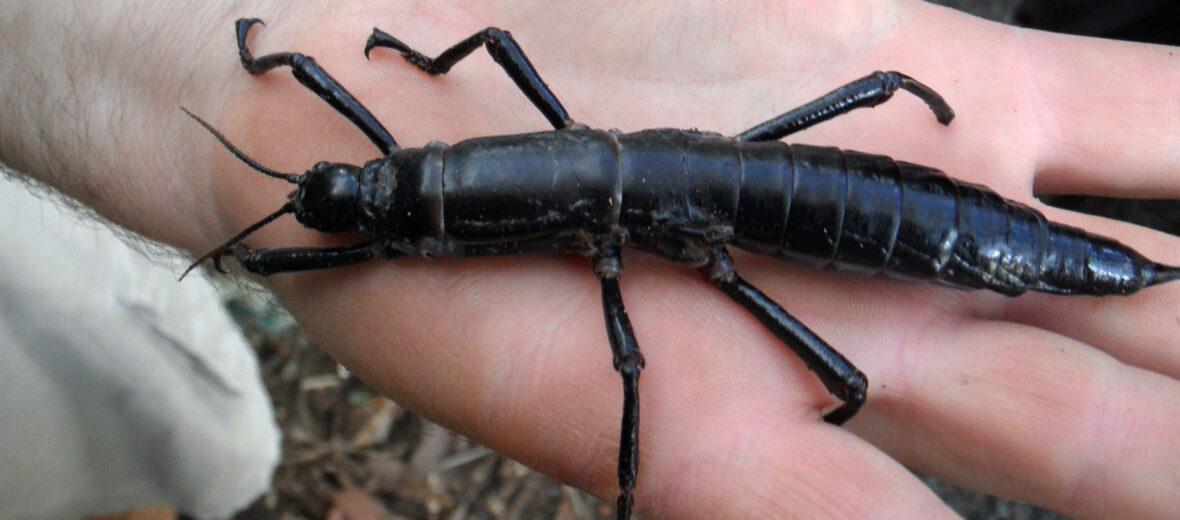
The Lord Howe Island stick insect, aka tree lobster, can only be found on the small islet of Ball’s Pyramid. These critters are considered the rarest insect in the world. Due to hunting; trapping; invasive species; and climate change (resulting in droughts and flooding), these creatures were extirpated (extinction of a species in a specific geographic area) from Lord Howe Island. The IUCN lists these cool insects as Critically Endangered. Their population trend is unknown.
First the Stats…
Scientific name: Dryococelus australis
Weight: Up to 1 ounce
Length: Up to 8 inches
Lifespan: Up to 18 months
Now on to the Facts!
1.) Like all stick insects, they exhibit sexual dimorphism (males are markedly smaller than females – by 25%).
2.) Unlike many other phasmids, these critters have no wings.
3.) In a rare case apart from most all insects, these creatures have been known to form a mated bond.
4.) Nymphs are bright green in color and diurnal (active during the day). However, as they molt and mature into adults, they become black or dark brown in color and nocturnal (active at night).
5.) As is the case with all phasmids, they are capable of parthenogenesis (reproduction without the presence of a male).
But wait, there’s more on the Lord Howe Island stick insect!
6.) These insects were once commonplace on Lord Howe Island. They were even used as bait for fishing.
7.) Ever since the ship SS Makambo ran aground on the island in 1918, black rats stowing away onboard escaped and infested the island, wiping out all the stick insects and more.
Did you know…?
There are only an estimated 35 wild individuals remaining. There are thousands more living in zoos around the world.
8.) In 2001, Australian scientists Nicholas Carlile and David Priddel, along with 2 assistants, were eventually able to locate several of these insects scrambling around the brush.
9.) Back in 2003, a research team from New South Wales National Parks and Wildlife Service returned to Ball’s Pyramid and collected 2 breeding pairs of these insects, 1 that went to a private breeder in Sydney and the other was sent to the Melbourne Zoo.
10.) By the beginning of 2016, the Melbourne Zoo had hatched 13,000 eggs, and had also delivered eggs to the Bristol Zoo in England, the San Diego Zoo in the United States, and the Toronto Zoo in Canada, to establish specific “insurance” populations.
But wait, there’s still more on the Lord Howe Island stick insect!
11.) In 2018, the CEO of the Lord Howe Island Board agreed to a plan to attempt to eradicate the black rats from Lord Howe Island, making way for the reintroduction of the stick insects to their original island home.
12.) Females lay up to 300+ eggs in their lifetime.
13.) Eggs hatch in up to 9 months.
Now a Short Lord Howe Island Stick Insect Video!
Be sure to share & comment below! Also, check out the Critter Science YouTube channel. Videos added regularly!
Want to suggest a critter for me to write about? Let me know here.
Some source material acquired from: Wikipedia & IUCN
Photo credit: Granitethighs



